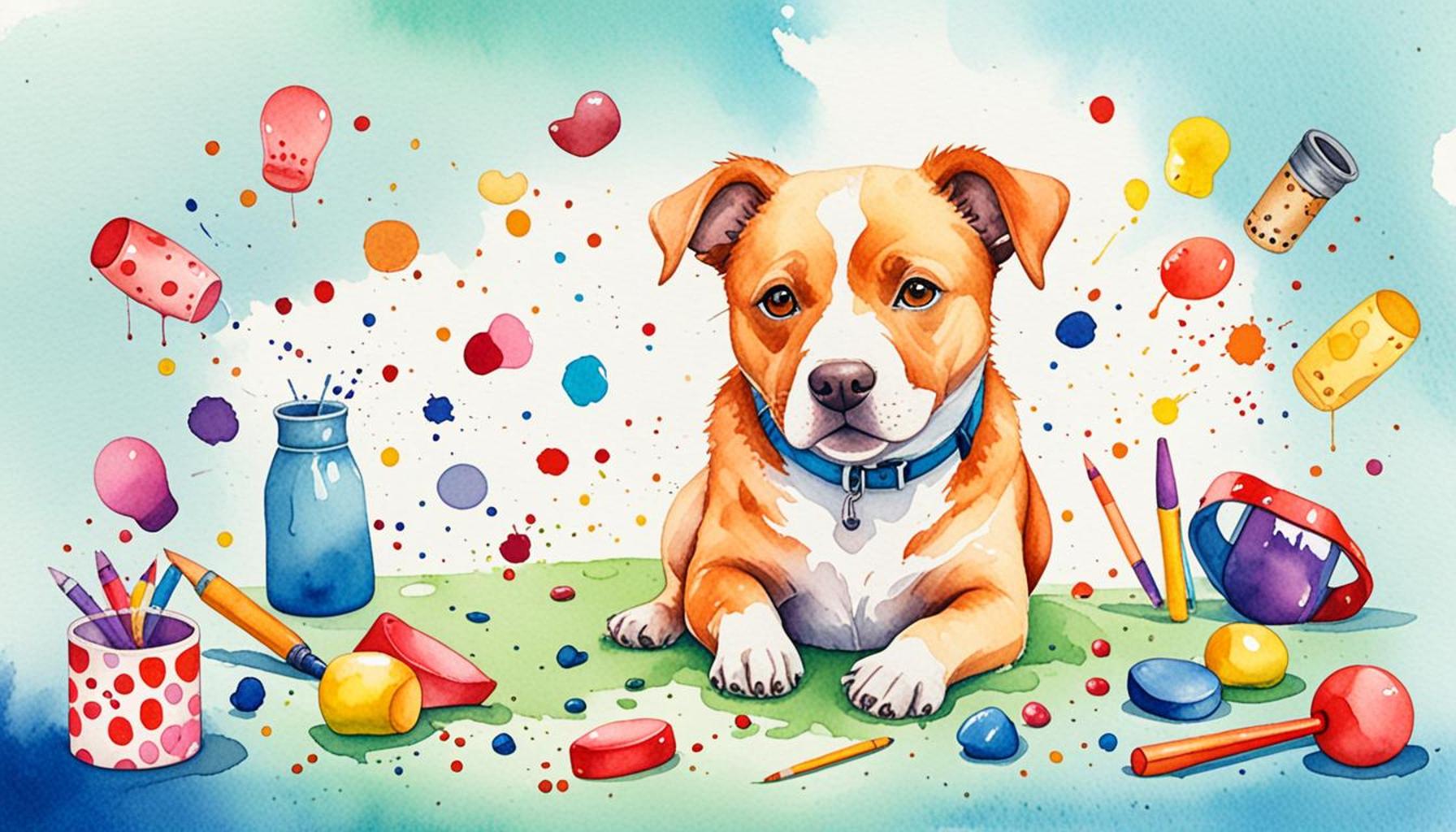How Separation Anxiety Manifests in Pets and How to Deal with It

The Impact of Separation Anxiety on Pets
Separation anxiety is not just a fleeting phase for many pets; it can become a chronic issue that deeply affects their quality of life. Both dogs and cats are particularly susceptible to this condition, which often leads to significant stress. When left alone, these animals may exhibit a range of distressing symptoms that indicate their discomfort and need for companionship. Understanding the signs of separation anxiety is vital for pet owners who wish to enhance their pets’ emotional well-being and promote a more harmonious living environment.
Common Symptoms of Separation Anxiety
Identifying the signs of separation anxiety is crucial, as early intervention can make a substantial difference. Here are some common indicators:
- Vocalization: You may notice your dog barking excessively or your cat meowing loudly when you leave. This vocal distress is a clear sign that they are anxious and seeking your attention.
- Destructive behavior: Many pets resort to chewing on furniture, scratching doors, or digging at carpets when they feel abandoned. For instance, a dog might tear up a sofa or a cat might shred curtains, both of which can lead to costly damages.
- House soiling: Separation anxiety can cause previously house-trained pets to urinate or defecate indoors. This behavior often stems from extreme stress rather than a lack of training.
- Excessive drooling: When feeling anxious, pets may produce more saliva than usual. You might notice wet patches around their mouths when you return home after being away.
Causes of Separation Anxiety
While the symptoms are often unmistakable, understanding the underlying causes of separation anxiety can help in formulating effective solutions. This condition can arise from several sources:
- Lack of socialization: Pets that have not been properly socialized during their formative months may become overly dependent on their owners, making them more susceptible to anxiety.
- Traumatic experiences: Sudden changes—such as a move to a new home or the loss of an owner—can trigger anxiety. A pet that has endured a traumatic event may feel particularly vulnerable when left alone.
- Changes in routine: Pets thrive on consistency. Even slight alterations in their daily schedule or environment, such as a new work schedule for you, can lead to stress.
Each pet is unique, and they express their anxiety in various ways. By recognizing the specific signs your pet exhibits, you can take the necessary steps to alleviate their distress and promote a more confident and calm demeanor.
Next Steps: Management and Treatment
In the upcoming sections of this article, we will delve into comprehensive and effective strategies for managing and treating separation anxiety. Techniques may range from gradual desensitization and positive reinforcement training to the use of calming products or professional assistance from veterinarians or animal behaviorists. By integrating these strategies, pet owners can help their beloved companions deal with separation, leading to a happier and healthier life for both pet and owner.

DISCOVER MORE: Click here to learn about clicker training
Recognizing and Understanding Separation Anxiety in Pets
Separation anxiety is a commonly misunderstood behavioral issue affecting pets, particularly dogs and cats. As loving companions, our pets thrive on routine and companionship, making the absence of their owners a major source of distress. The manifestations of separation anxiety can vary greatly among individual pets, leading to a complex challenge that requires attentive observation and understanding. Recognizing these manifestations is the first step towards effective management and treatment.
Emotional and Physical Manifestations
Separation anxiety doesn’t just cause emotional distress for your pet; it can also lead to physical symptoms that signify their anxiety levels. Here are some key behavioral signs you should look out for:
- Pacing: Many pets will walk in circles or back and forth in their environment, displaying restlessness and agitation when left alone.
- Excessive Licking or Grooming: Pets may self-soothe through grooming behaviors, leading to skin irritations and bald patches if the behavior is chronic and uncontrolled.
- Clinginess: Some pets will follow their owners around the house, demonstrating their dependence on human interaction. This behavior often activates when they sense impending separation.
The combination of these signs can create a cycle of anxiety, leading to increasingly severe behaviors. It is essential for pet owners to remain vigilant and compassionate, understanding that these signals are cries for help rather than mere bad behavior.
How Environment and Routine Influence Anxiety
A variety of environmental factors can exacerbate separation anxiety. Pets typically feel vulnerable in chaotic or unpredictable environments. Here are some elements that can intensify their feelings of anxiety:
- Frequent Relocation: Moving homes can be particularly disconcerting for pets, causing them to feel insecure in their new surroundings.
- Family Changes: Changes in family dynamics or the loss of a household member can dramatically impact a pet’s sense of stability.
- Inconsistent Routines: Sudden changes in daily activities—such as varying work hours or differing feeding times—can lead to confusion and distress.
For pet owners, understanding the intricate relationship between these factors and their pets’ behaviors is crucial in addressing separation anxiety. By creating a predictable and secure environment, owners can help their pets feel more at ease and reduce their anxiety-driven behaviors.
Paving the Way for Solutions
By ensuring that you’re attuned to your pet’s unique signs and triggers, you lay the groundwork for effective strategies to combat separation anxiety. Recognizing that early intervention can lead to better outcomes is vital for enhancing their overall well-being. In the next sections, we will explore practical solutions and management techniques that can alleviate your pet’s distress, leading to a more relaxed and balanced lifestyle for both you and your furry friend.
Understanding the Symptoms of Separation Anxiety in Pets
Recognizing the signs of separation anxiety in pets is crucial for effective management and treatment. Pets may exhibit a range of behaviors when they experience separation anxiety. Common manifestations include excessive barking, howling, or whining when left alone. Additionally, pets might engage in destructive behaviors, such as chewing furniture or clawing at doors in a desperate attempt to escape and find their owners.Furthermore, some pets may display changes in their bathroom habits, urinating or defecating inside the house despite being trained. Others may exhibit signs of distress, such as pacing, drooling, or attempting to hide. These symptoms can lead to a difficult situation not just for pets, but for their owners as well, causing stress and discomfort in the household.Understanding that these behaviors stem from anxiety—not spite or rebellion—is essential in approaching the issue effectively. Solutions can range from behavioral training, gradual desensitization, or the use of calming products, allowing both pets and their owners to enjoy a more peaceful time apart.
Strategies for Helping Pets Overcome Separation Anxiety
Several effective strategies can help alleviate separation anxiety in pets. Establishing a consistent routine can create a sense of security for your furry friends. Regular feeding, walking, and playtimes can help pets adapt to the concept of being alone.Counter-conditioning is another powerful technique used to change your pet’s emotional response to being alone. By associating your departures with positive experiences—such as treats or favorite toys—you can help them build a more positive connection to alone time.Gradual desensitization, where you slowly increase the amount of time spent apart, also proves beneficial. Start with short periods and gradually increase them, allowing your pet to adjust comfortably without excessive stress. Furthermore, incorporating interactive toys or puzzles helps to engage your pet mentally while you are away, reducing feelings of boredom and frustration.Finally, consulting a veterinarian or a pet behaviorist can provide valuable insights and possible treatment options, including medications in severe cases. Continuous observation and adaptation of these strategies can significantly improve your pet’s comfort and confidence during your absences.
| Signs of Separation Anxiety | Common Behavioral Indicators |
|---|---|
| Excessive vocalization | Barking, howling, or whining when left alone. |
| Destructive behavior | Chewing furniture, scratching doors, or other damage. |
| Inappropriate elimination | Urinating or defecating inside when alone. |
| Physical signs of stress | Pacing, drooling, panting, or attempts to hide. |
Understanding these crucial elements is vital for pet owners aiming to mitigate separation anxiety effectively. By employing various strategies, you can foster healthier behaviors and strengthen the bond with your beloved companions, paving the way for a happier, more contented life.
LEARN MORE: Click here for tips on creating a safe space for your pet
Practical Strategies for Alleviating Separation Anxiety
Once you have recognized the signs of separation anxiety in your pet, the next step is to implement practical strategies to alleviate their distress. While every pet is unique, there are several effective methods that pet owners can adopt to help their furry companions feel more secure when faced with periods of solitude.
Desensitization Techniques
One of the most effective ways to reduce separation anxiety is through a process called desensitization. This involves gradually getting your pet used to being alone for short periods. Start by leaving your pet in a separate room for just a few minutes while you are home, allowing them to adjust to the idea of solitude. Gradually increase the duration of time you’re away, ensuring that your pet is calm and relaxed when you return. This approach helps to break the association between your departure and their anxiety, gradually teaching them that being alone can be a non-threatening experience.
Creating a Comforting Environment
Another crucial aspect of managing separation anxiety is providing a comfortable and safe space for your pet when you are not home. Consider confining them to a specific room or area equipped with their favorite toys, bedding, and items that carry your scent, such as an old t-shirt. This space can provide a sense of security during your absence. Additionally, consider using calming fragrances, such as lavender or pheromone diffusers designed specifically for pets, which can help create a soothing atmosphere.
Engaging Their Minds with Enrichment Activities
Providing mental stimulation can also play a significant role in easing your pet’s anxiety. Engaging in enrichment activities keeps their mind occupied and reduces boredom, which can exacerbate anxiety symptoms. Items such as interactive toys, puzzle feeders, and kong-type toys filled with treats can divert their attention during your absence. Dog or cat training sessions can also be beneficial, as they promote positive interaction and reinforce good behavior. Consider spending quality time with your pet before you leave, ensuring they feel loved and secure.
Seeking Professional Help
If your pet’s separation anxiety is severe or doesn’t improve with these behavioral strategies, it may be time to consult with a professional. Veterinarians can provide valuable insights and potentially recommend treatment options, including medication to help alleviate anxiety symptoms. Certified animal behaviorists can also offer specialized training techniques tailored to your pet’s specific needs. By collaborating with professionals, you can develop a comprehensive plan that addresses your pet’s unique set of circumstances.
Fostering Independence
Lastly, encouraging independence in your pet can drastically reduce their separation anxiety over time. Start by incorporating short periods of independent play into your pet’s daily routine. For example, encourage them to play with toys on their own or engage with food puzzles without your direct involvement. This can teach them that it’s okay to enjoy their time alone, ultimately leading to a more confident pet.
Through understanding and employing these strategies to address separation anxiety, pet owners can cultivate resilience and well-being in their furry friends while ensuring harmony in their living environment. Each small step taken signifies a commitment to nurturing a deeper bond and understanding between you and your beloved pet.
DISCOVER MORE: Click here for essential tips
Conclusion
In summary, understanding how separation anxiety manifests in pets is crucial for fostering a harmonious relationship between you and your furry companion. From excessive barking and destructive behavior to physical signs like pacing and drooling, recognizing these symptoms is the first step toward effective intervention. As outlined in this article, employing practical strategies such as desensitization techniques, creating a comforting environment, and engaging your pet with enrichment activities can significantly alleviate their anxiety during periods of solitude.
Moreover, seeking professional help can offer tailored guidance and potential treatment options, particularly for pets experiencing severe anxiety. Remember that fostering independence in your pet is not just beneficial for them but also for your peace of mind, as it empowers them to be comfortable when alone. Each pet is unique, and patience is essential in finding the right combination of strategies that will work for your specific situation.
Ultimately, addressing separation anxiety is about building trust and establishing a safe environment where your pet can thrive even in your absence. By investing time and effort into understanding and accommodating your pet’s needs, you create a nurturing atmosphere that can enhance their well-being and your shared quality of life. Take these insights as a starting point, and don’t hesitate to explore further resources and community support to ensure your beloved pet finds comfort and confidence, no matter how brief your departures may be.


